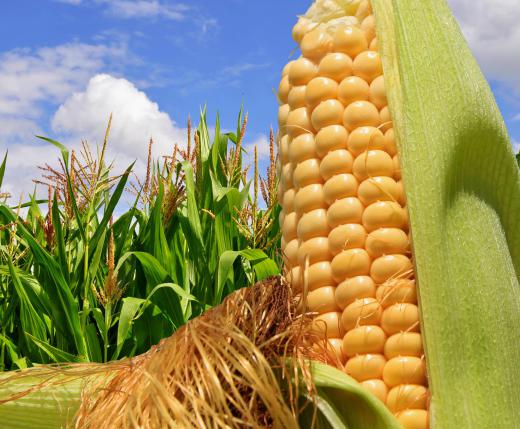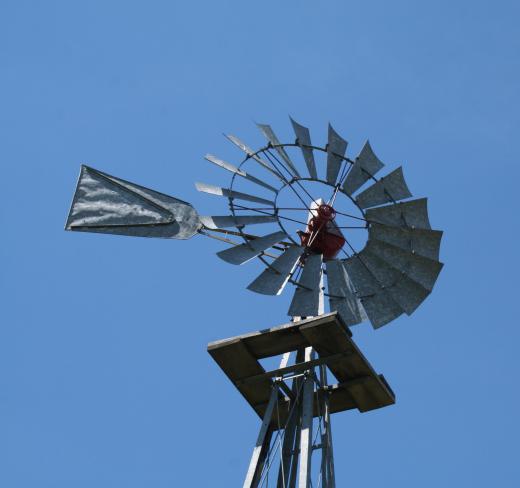A gristmill is a facility which is designed to grind grain into flour. Historically, gristmills were often a very important part of the community, with farmers bringing in grain to grind in return for a fee from the miller. Millers often took their fees in trade, selling or trading grain and flour with other villages and turning their mills into stores stocked with these goods. A handful of communities around the world continue to have working gristmills which are used on a local scale, although the bulk of grain destined to become flour goes to vast commercial facilities with high-tech grinding equipment.
Gristmills have been around for centuries, since people have been using flour for quite a long time. Early gristmills were powered by livestock, slaves, water, or windmills. Whatever method of power used, the gristmill would host a huge millstone upon which grain would be poured for the purpose of grinding it into flour. Typically, a gristmill would be cited near a power source such as a river.

The facilities at a gristmill, ancient or modern, are designed to accommodate cleaned grain, which is also known as grist. Grist has been threshed to remove its outer hull and sifted to remove chaff, which means that every part of the grain is edible. In some cases, a gristmill has facilities for cleaning grain, but most typically, farmers are expected to clean their own grain, bringing prepared grist for grinding. For modern companies, this cuts down significantly on shipping costs, as there's no reason to ship useless chaff along with usable grain, although some mills clean grain onsite and burn the chaff to power the mill.

Gristmills are also known as corn mills and flour mills, referencing their primary function. Depending on the community, gristmills historically could handle a wide range of grains, including wheat, corn, and rye. Once the grain had been ground into flour, the miller would take a cut of the proceeds, allowing the farmer to take the rest; some farmers chose to sell their flour through the miller, allowing him or her a percentage of the take in exchange for handling the transaction.

In communities where working antique gristmills are present, tours are commonly offered to people who would like to explore. Such mills may be used commercially or only for tour demonstrations, with a staff who can provide historical information and discuss the way in which the mill's equipment works. Visiting the site of a gristmill, even when it is not operating, can be very interesting, as such sites provide a fascinating glimpse into the past.
Ever since she began contributing to the site several years ago, Mary has embraced the exciting challenge of being a About Mechanics researcher and writer. Mary has a liberal arts degree from Goddard College and spends her free time reading, cooking, and exploring the great outdoors.

